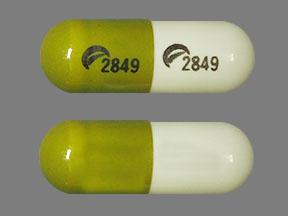
Fluvoxamine ER Coupons & Savings Card – Discount Prices from $91.19
My prescription
Edit
150MG, Fluvoxamine ER (30 Capsule Extended Release 24 Hours)
Select pharmacy

CVS
$103.85
COUPON PRICE
Walgreens
$91.19
COUPON PRICE
Albertsons
$185.90
COUPON PRICE
Walmart
$229.14
COUPON PRICEFluvoxamine ER savings card
Show this card to your pharmacist
Walgreens
$91.19
BIN
ID
PCN
GRP
011867
LHF4A17A99
HT
LABH001
Powered by
More prescriptions for obsessive-compulsive disorder
More prescriptions for obsessive-compulsive disorder
Fluvoxamine ER dosage forms
Dosage Quantity Price from Per unit 100MG 30 Capsule Extended Release 24 Hours $92.86 $3.10 150MG 30 Capsule Extended Release 24 Hours $103.85 $3.46
| Dosage | Quantity | Price from | Per unit |
|---|---|---|---|
| 100MG | 30 Capsule Extended Release 24 Hours | $92.86 | $3.10 |
| 150MG | 30 Capsule Extended Release 24 Hours | $103.85 | $3.46 |
Fluvoxamine ER Warnings
When considering the use of antidepressant medications, such as fluvoxamine, it is crucial to be aware of potential risks and necessary precautions. The following points outline important safety information to discuss with your healthcare provider:
Suicidal Thoughts and Behavior: There is an increased risk of suicidal thoughts or behaviors in individuals, particularly those under 25, during the initial months of treatment or when changing the dosage. It is important to monitor any changes in mood or behavior and report them immediately to your healthcare provider.
Serotonin Syndrome: This rare but serious condition can occur if fluvoxamine is used with other medications affecting serotonin levels. Symptoms include a rapid heartbeat, sweating, muscle stiffness, fever, and confusion. Immediate medical attention is required if these symptoms appear.
Medication Interactions: Fluvoxamine may interact with various medications, potentially leading to severe heart problems. Ensure all your current medications are disclosed to your healthcare provider to avoid harmful interactions.
Worsening of Glaucoma: Fluvoxamine can exacerbate narrow-angle glaucoma. Notify your healthcare provider and eye care professional if you experience any vision changes.
Withdrawal Symptoms: Abruptly stopping fluvoxamine can lead to withdrawal symptoms such as nausea, anxiety, flu-like symptoms, and dizziness. Always consult your healthcare provider before discontinuing use.
Increased Bleeding Risk: There is a heightened risk of bleeding if fluvoxamine is taken with aspirin, NSAIDs, or blood thinners. Report any unusual bruising or bleeding to your healthcare provider.
Mania in Bipolar Disorder: Antidepressants can trigger manic episodes in individuals with bipolar disorder. Discuss your personal and family medical history with your provider before starting fluvoxamine.
Seizures: Although rare, seizures may occur. Inform your healthcare provider if you have a history of seizures.
Low Sodium Levels: Fluvoxamine can sometimes cause low sodium levels, particularly in older adults or those on diuretics. Report any signs of weakness, confusion, or headache to your healthcare provider.
Sexual Side Effects: Some individuals may experience sexual dysfunction, such as decreased libido or difficulty achieving orgasm. Discuss these side effects with your provider for management options.
Contraindications: Fluvoxamine should not be used in individuals currently taking tizanidine, thioridazine, alosetron, pimozide, linezolid, or IV methylene blue, or those who have used MAOIs in the past 14 days. Always consult your healthcare provider if any of these conditions apply to you.
Fluvoxamine ER Side Effects
Common side effects:
- nausea
- headache
- sleepiness
- trouble sleeping
- dry mouth
- weakness
- nervousness
- dizziness
- diarrhea
- constipation
- upset stomach
Less common but important to monitor:
- loss of appetite
- vomiting
- gas
- changes in taste
- tremors
- anxiety
- low sex drive
- delayed ejaculation
- depressed mood
- increased sweating
- increased urination
Serious side effects:
- easy bleeding or bruising
- muscle pain
- pounding heartbeat
- fainting
- irregular heartbeat
- black stools
- vomit resembling coffee grounds
- seizures
- eye pain or redness
- widened pupils
- vision changes
- serotonin syndrome
- fast heartbeat
- hallucinations
- severe dizziness
- severe gastrointestinal issues
- twitching muscles
- fever
- unusual agitation
- painful or prolonged erection
- rash
- itching
- swelling (particularly of the face, tongue, or throat)
- trouble breathing
Fluvoxamine ER Interactions
Interactions with high risk of serious adverse effects and should be avoided:
- MAO inhibitors (e.g., isocarboxazid, phenelzine)
- Drugs that increase serotonin (e.g., SSRIs like Fluoxetine, SNRIs like Duloxetine, St. John's wort, Tryptophan)
- Drugs that cause bleeding/bruising (e.g., Clopidogrel, Ibuprofen, Naproxen, Dabigatran, Warfarin)
Interactions with moderate risk that may require dose adjustment, closer monitoring, or timing changes:
- Pimozide
- Thioridazine
- Alosetron
- Clozapine
- Methadone
- Benzodiazepines (e.g., Alprazolam, Diazepam)
- Aspirin (if not prescribed for heart conditions)
- Caffeine
- CNS depressants (e.g., alcohol, cannabis, antihistamines, sleep aids, opioid pain relievers)
Interactions with low risk that usually do not require a change in therapy:
- Smoking
- Lab tests (e.g., brain scan for Parkinson's disease)
